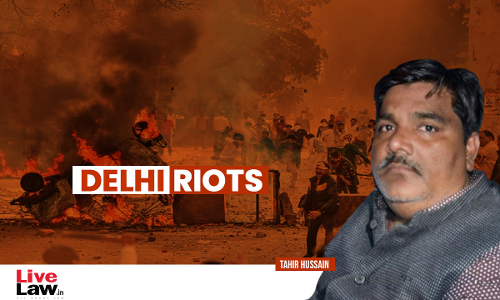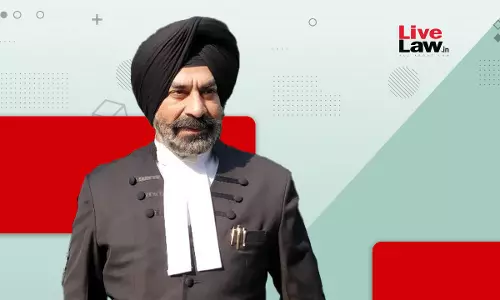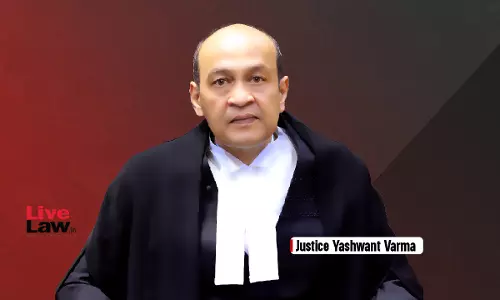NGT Finds Centre Notification On Minor Minerals “Mine-Centric”, Asks It To Bring In Ambit Of EIA, Public Consultation [Read Order]
![NGT Finds Centre Notification On Minor Minerals “Mine-Centric”, Asks It To Bring In Ambit Of EIA, Public Consultation [Read Order] NGT Finds Centre Notification On Minor Minerals “Mine-Centric”, Asks It To Bring In Ambit Of EIA, Public Consultation [Read Order]](https://www.livelaw.in/cms/wp-content/uploads/2016/05/NGT.jpg)
Now mining of minerals from areas ranging from 5 to 25 hectares will also require Environment Impact Assessment (EIA), Environment Management Plan (EMP) and public consultation as the National Green Tribunal has, in a landmark decision, held the Centre’s January 15, 2016 notification which completely exempts mining areas from 5 to 25 hectares from Environment Impact Assessment (EIA) and...
Now mining of minerals from areas ranging from 5 to 25 hectares will also require Environment Impact Assessment (EIA), Environment Management Plan (EMP) and public consultation as the National Green Tribunal has, in a landmark decision, held the Centre’s January 15, 2016 notification which completely exempts mining areas from 5 to 25 hectares from Environment Impact Assessment (EIA) and public consultation to be “mine-centric”.
A bench of NGT Chairperson AK Goel, Justice Jawad Rahim, SP Wangdi and expert member Dr Nagin Nanda has asked the Centre to rework procedures for providing for EIA, EMP and Public Consultation for all areas from 5 to 25 ha falling under Category B-2 at par with Category B-1 by the State-level Expert Appraisal Committee (SEAC) or the State Environment Impact Assessment Authority (SEIAA) rather than by the District Environment Impact Assessment Authority (DEIAA) which comprises bureaucrats.
The tribunal held that the 2016 notification diluted provisions to check exploitation of minor minerals.
On the provisions in the 2016 notification, the bench said, “These provisions quite apparently are more mine-centric rather than striving a balance between mining and environment especially with regard to Form-1M (required to be submitted for mining of minor minerals upto 5 ha) which needs to be made more elaborate incorporating environment-related aspects”.
The tribunal said so while deciding a batch of applications assailing the notifications dated 15.01.2016, 20.01.2016 and 01.07.2016 amending the EIA notification dated 14.09.2006.
The petitioners, including environmental activist Vikrant Tongad, had challenged the notification on the ground that the procedure for obtaining environmental clearance in respect of mining of minor minerals for areas from 0 to 25 ha has been diluted by bringing it within B-2 category projects and exempting such category from public consultation, EIA, EMP which was in contravention of the judgment of the Supreme Court in case titled Deepak Kumar Vs. State of Haryana & Ors and Tribunal’s decision in 2015.
The applicants argued that while the Supreme Court had held that all mining leases in respect of its size would require to obtain environmental clearance and be subjected to strict regulatory framework applicable to all major minerals, the impugned notifications, more particularly the one dated 15.01.2016, exempts the necessity of having EIA and public consultation for areas upto 25 ha when earlier it was necessary for areas from 5 to 50 ha.
The petitioners also submitted that the January 15, 2016 notification had split Category B into category B1 and B2. Category B2 was further split into areas of 0-5 ha and 5-25 ha. While 0-5 ha has been exempted from the requirement of EIA/Public Consultation, such exemption has also been provided even for mining areas of 5 ha to 25 ha for which the authority prescribed for grant of Environmental Clearance is now the DEIAA, whose officers are bureaucrats lacking any expertise to assess environmental implications.
Category B-1 being mining areas of 25 ha to 50 ha, the authorities prescribed are the SEAC and SEIAA. For those in excess of 50 ha, it is the Expert Appraisal Committee (EAC) and the Ministry of Environment, Forests and Climate Change (MoEF&CC).
The tribunal noted that category B-2 projects of 0-5 ha under individual and cluster category are exempted from requirements of preparing EIA report and EMP and those greater than 5 ha and less than or equal to 25 ha are exempted from preparing EIA both with respect to individual mining lease and cluster situation.
“We find that the impugned Notification dated 15th January, 2016 is not consistent with the decision of the Hon’ble Supreme Court in the case of Deepak Kumar (supra). We find substance in the submissions of the Ld. Counsel for the applicant that while breaking category B of the mines to B-1 & B-2 may not per se be bad, it certainly dilutes the stringent requirement of lease areas upto 25 ha being exempted from the necessity of submitting EIA and EMP for grant of Environmental Clearance,” said the NGT.
It, however, allowed retention of the category of 0-5 hectares but said any attempt to form clusters of less than 5 hectares to avoid EIA would be viewed seriously.
Considering the procedures set out in the notification under challenge, the tribunal said, “Introduction of such procedure, in our view, is clearly not consistent with the directions contained in the case of Deepak Kumar and the spirit behind such direction. By the provision, mining area upto from 5 ha to 25 ha has been completely exempted from the EIA and Public Consultation. For areas of 5 ha and below, apart from the exemption, it has been made the only subject to a separate procedure of preparing a District Survey Report (DSR). These provisions quite apparently are more mine- centric rather than striving a balance between mining and environment especially with regard to Form-1M which needs to be made more elaborate incorporating environment-related aspects”.
“Thus, even according to the Sustainable Sand Mining Management Policy issued by the MoEF&CC by dispensing with Public Hearing, the judgment of the Hon’ble Supreme Court in the case of Deepak Kumar (supra) will stand defeated,” it said.
Placing Survey report in public not akin to public hearing
“We also find that parameters for consideration while preparing District Mining Plan (DMP) and District Survey Report (DSR) are only for the purpose of ascertaining whether an area is fit for mining which are quite different from the parameters laid down for EIA. The consideration of the viewpoint of the public by keeping DSR in public domain is not a substitute of Public Hearing for consideration of the viewpoint of the public for EIA,” the tribunal observed.
“Dispensing with the requirement of Public Hearing which forms a part of the Public Consultation under Stage-III of the Environmental Clearance process under EIA Notification, 2006 for areas measuring 0 to 25 ha for individual mine areas and in cluster situation where public hearing has been provided, has resulted in gross dilution of EIA Notification dated 14th September, 2006.
“Such dilution would, in our view, result in its misuse by unscrupulous elements and the situation would revert back to the lawless state prevailing prior to the decision in the case of Deepak Kumar (supra). Stringent measures are, therefore, necessary if the rampant exploitation of the minor minerals is to be curbed. This apparently was also the view of the Hon’ble Supreme Court in the case of Deepak Kumar,” said the tribunal.
The tribunal then directed that “the procedure laid down in the impugned Notification be brought in consonance and in accord with the directions passed in the case of Deepak Kumar (supra)” by:
(i) Providing for EIA, EMP and therefore, Public Consultation for all areas from 5 to 25 ha falling under Category B-2 at par with Category B-1 by SEAC/ SIEAA as well as for cluster situation wherever it is not provided;
(ii) Form-1M be made more comprehensive for areas of 0 to 5 ha by dispensing with the requirement for Public Consultation to be evaluated by SEAC for recommendation of grant EC by SEIAA instead of DEAC/DEIAA;
(iii) If a cluster or an individual lease size exceeds 5 ha, the EIA/EMP be made applicable in the process of grant of prior environmental clearance;
(iv) EIA and/or EMP be prepared for the entire cluster in terms of recommendation 5 (supra) of the Guidelines for the purpose of recommendations 6, 7 and 8 thereof;
(v) Revise the procedure to also incorporate procedure with respect to the annual rate of replenishment and timeframe for replenishment after mining closure in an area; and
(vi) The MoEF&CC to prepare guidelines for calculation of the cost of restitution of damage caused to mined-out areas along with the Net Present Value of Ecological Services forgone because of illegal or unscientific mining.
The bench allowed retention of 0-5 ha as a category keeping in view that some states grant an isolated single lease of 5 ha and less not falling in cluster situation.
The bench also reiterated that any attempt to split the lease area for the purpose of avoiding the applicable regulatory regime shall be viewed seriously.
Read the Order Here




